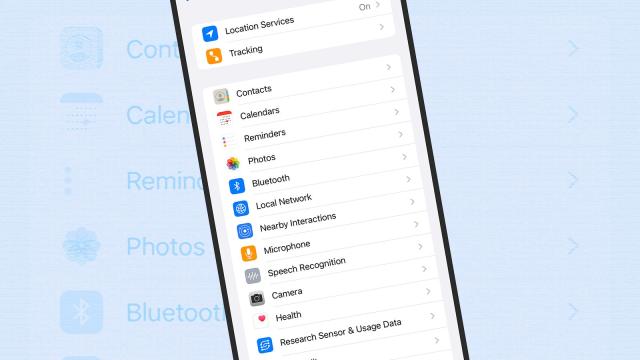You don’t want to worry about an app unnecessarily having access to other parts of your phone, and you can control this by limiting its permissions. This means you can change settings that specify what the app is and isn’t allowed to do in terms of finding your location, recording video and audio, and so on. iOS includes more permission management options than ever before, and it’s important to be aware of how they all work.
Checking up on the permissions that an app has starts even before you install it. You’ll notice that the listings in the App Store now come with privacy labels, which are breakdowns of the information that the app in question is going to collect. While this is more about data use than permissions, these can be useful pointers to how the app works in terms of location-tracking and more.
Once an app is actually installed on your phone, it will ask for permissions as and when it needs them, rather than right away. You can quickly check up on the permissions that an app has by finding its entry in the main iOS Settings screen — access to your location, your photos, and your phone’s microphone and camera should be listed at the top of the subsequent screen, if they’ve been requested.
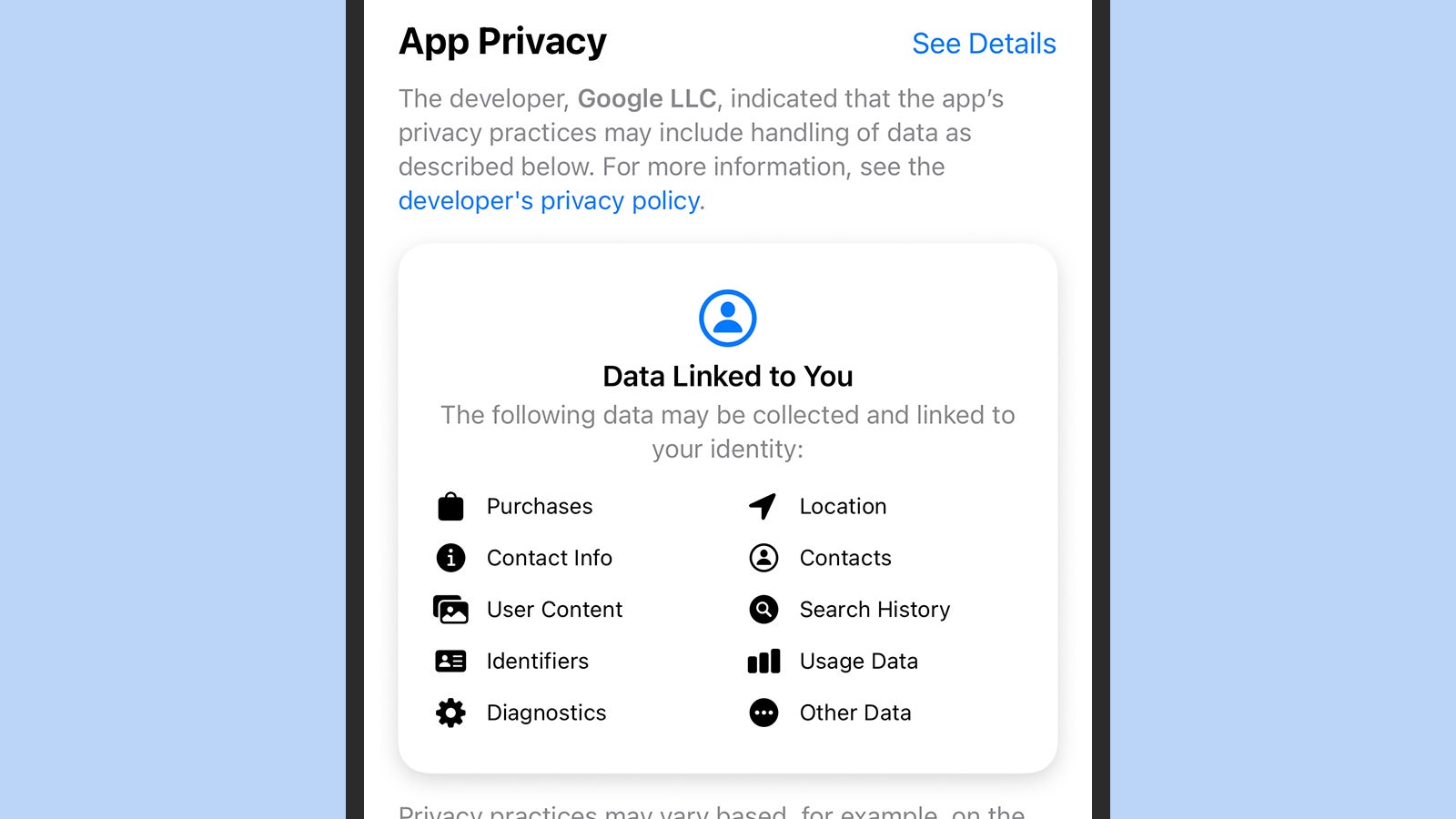
Whether or not an app is allowed to show notifications and access data over cellular networks can be controlled from the same screen. Alternatively, choose Privacy from iOS Settings to browse based on the type of permission rather than by the app. Whichever route you take, you can grant and revoke permissions with a tap.
The list of available permissions on iOS is longer than you might think. As well as the more well-known permissions, including access to your location and the iPhone’s camera, you’ve also got access to the data stored in the Health app, access to your contacts and calendars, access to other devices on your local network, access to devices that are connected via HomeKit, and even access to the sensors built into your phone (essential for fitness-tracking apps).
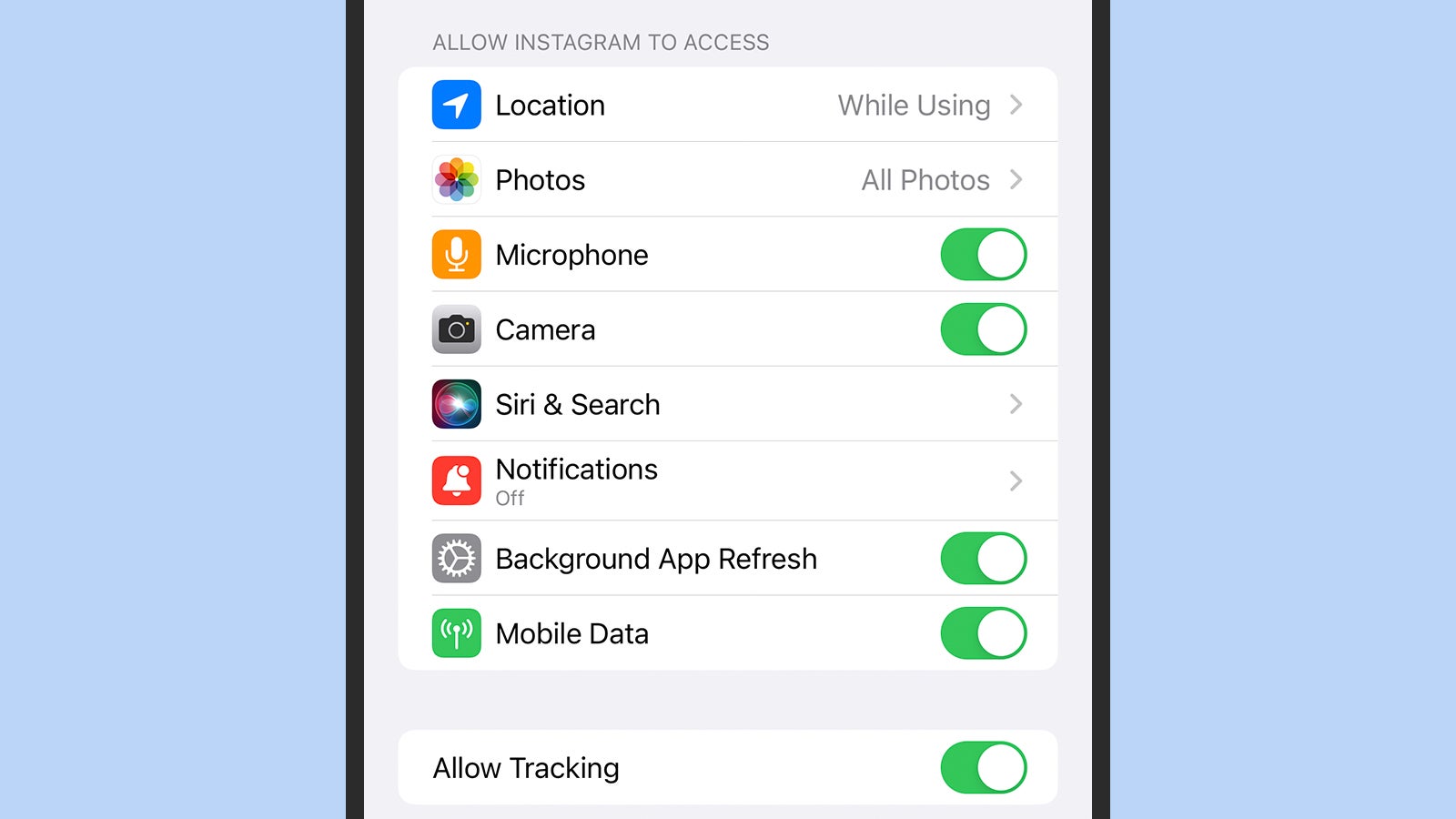
iOS now gives you more granular control over several of these permissions, rather than a simple on or off switch. Edit a Photos permission, for example, and you’ll see you can choose from Selected Photos, All Photos, and None. It’s possible to only grant access to a specific group of images or even just one picture at a time, rather than your entire photo library, and you can edit the selected photos or albums at any time.
One way this comes in useful is with image editors. Instead of letting an app (potentially) take a peek at every photo and video you’ve ever taken, you can limit its access to the one particular picture that you want to make changes to. If you want to be really restrictive, you can revoke access to the image once it’s been edited and saved, as well.
You can also restrict social media apps like Facebook from scanning your entire Camera Roll, which is useful.
Location is another permission where you’ve got a lot of flexibility in terms of granting apps access. Your options here are Never, Ask Next Time Or When I Share, While Using the App, and Always. The Ask Next Time Or When I Share option can lead to a flurry of alerts on an app that regularly wants to know whereabouts in the world you are, but it does at least mean that when an app is pinging your location, you know about it.
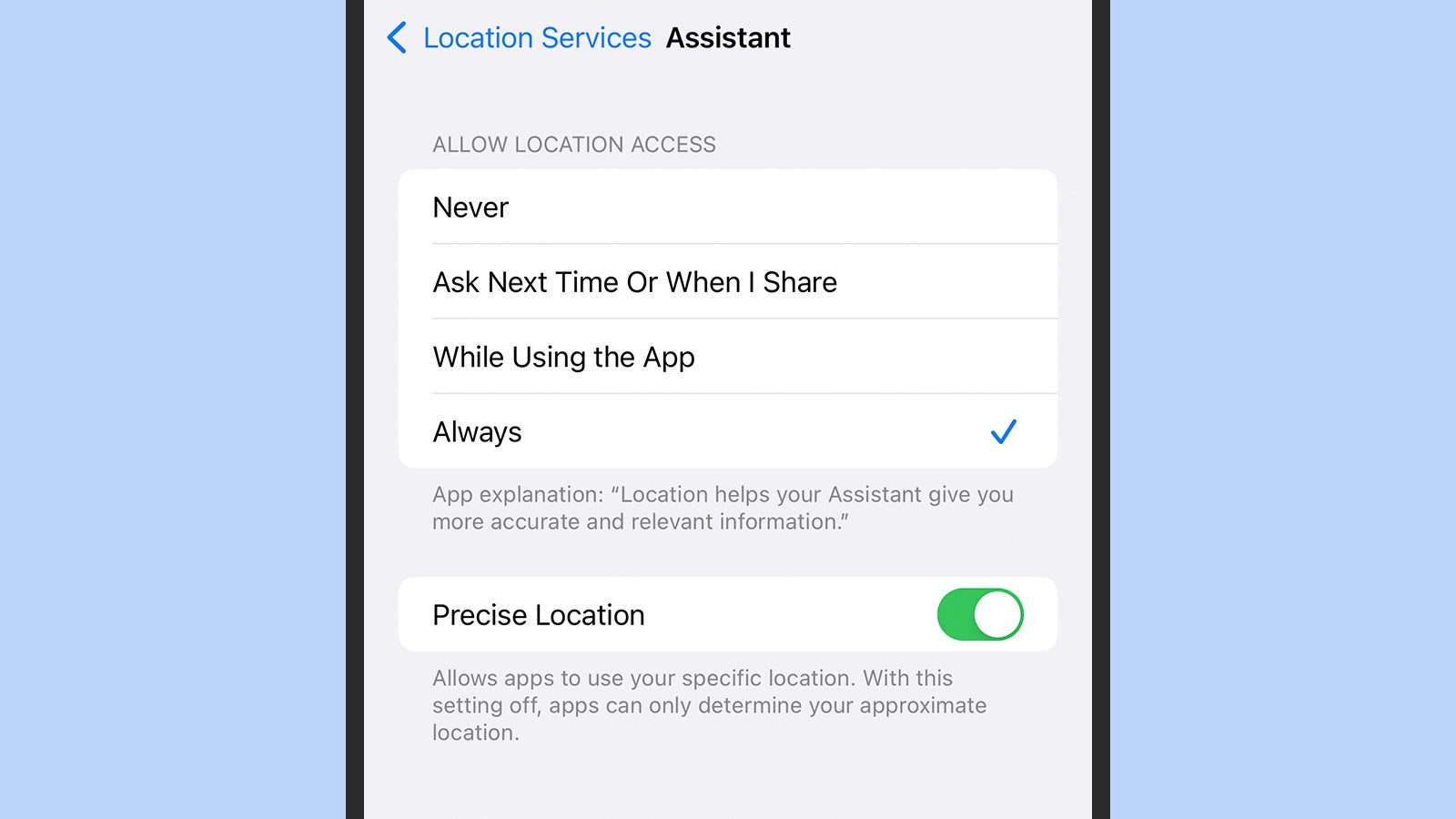
There’s also a Precise Location toggle switch on this permission settings page. For those apps that need to know your general location but not your exact GPS coordinates — so weather apps, maybe — you can turn this option off, which will mean one less app that’s able to log everywhere you’re going each day.
The location permission comes with little arrow indicators that you’ll see next to apps that have requested access. A hollow purple arrow means an app can receive your location under certain conditions, a solid purple arrow means an app has recently used your location, and a solid grey arrow means an app has used your location in the last 24 hours. These indicators can help you spot apps that are needlessly grabbing your location all the time.
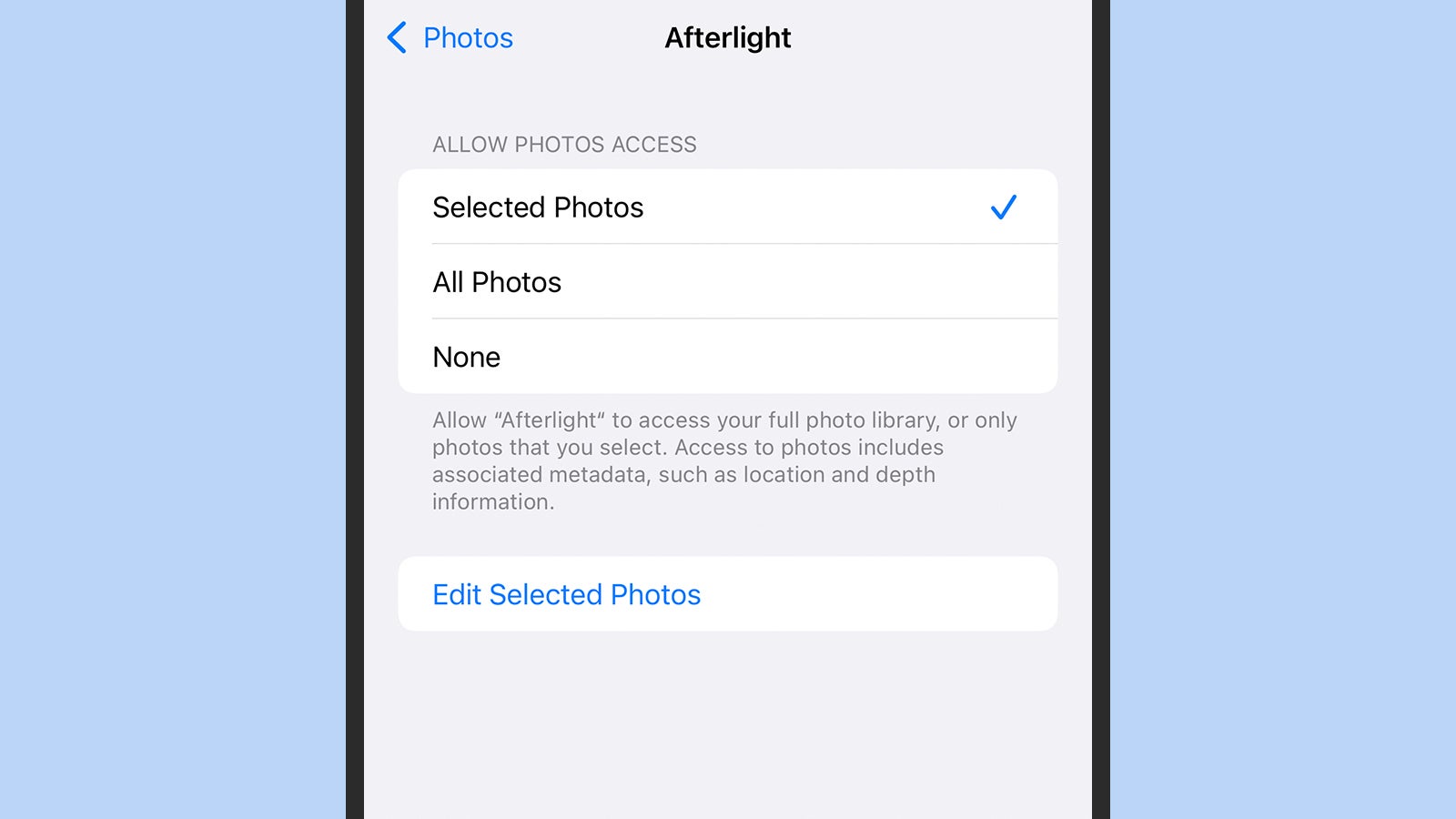
App permission indicators show up in the status bar and at the top of the iPhone, too. There’s an arrow for location, an orange dot for your microphone, and a green dot for your camera. In the case of the microphone and camera permissions, you can open up the Control Centre (swipe down from the top right corner of the screen) to see which app is currently using them.
In the case of location access, if you give an app permission to monitor this in the background, iOS will display regular reminders about it, so you don’t forget. From the pop-up that appears, you can change the permission setting if you’re no longer happy with the app knowing your whereabouts around the clock. You’ll also see a map of places where the app has triggered its location access privileges.
Right now iOS strikes a balance between simplicity and control when it comes to app permissions: They’re easy enough to manage without really thinking about them, but if you do need that extra bit of flexibility with your permissions — especially when it comes to location and photo access — then it’s there if you need it.
